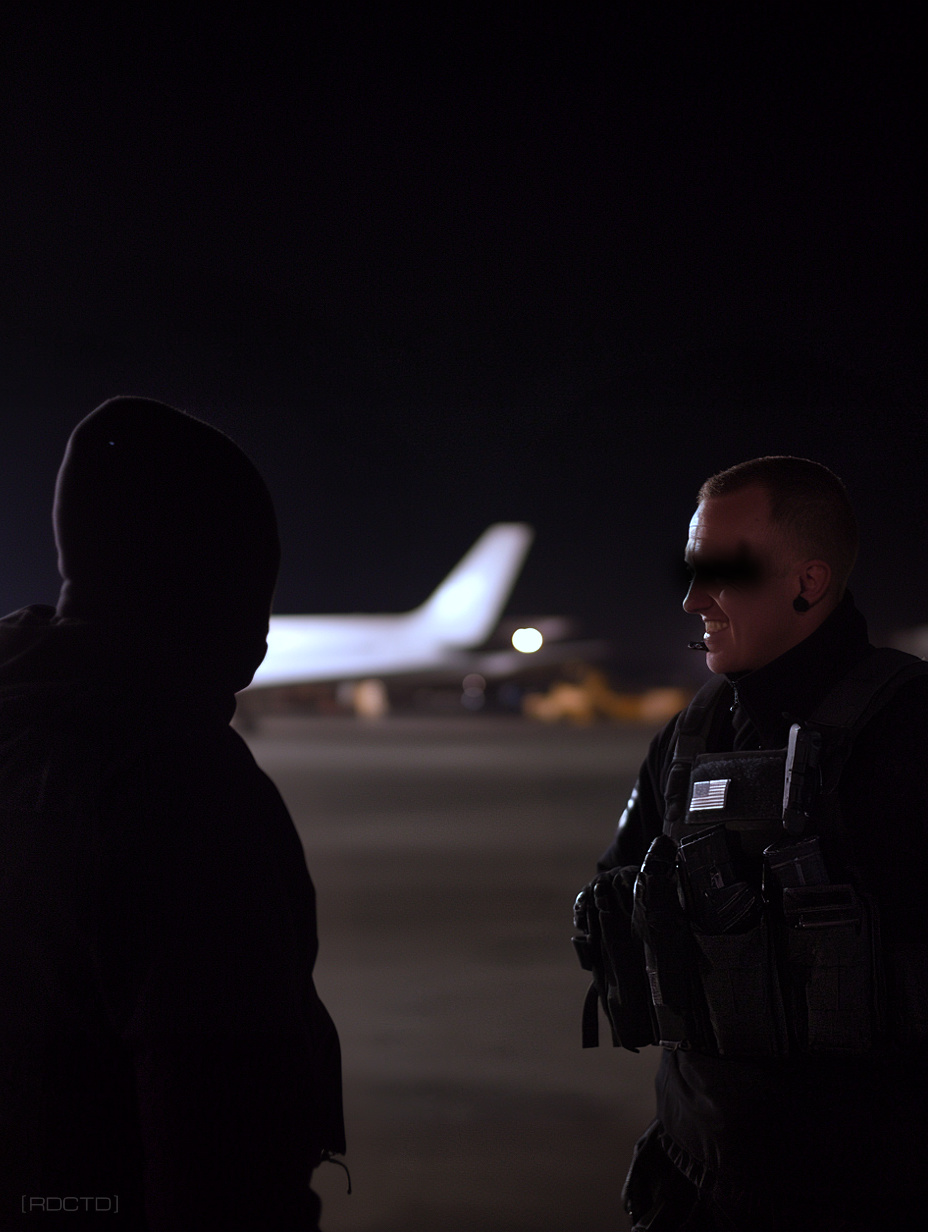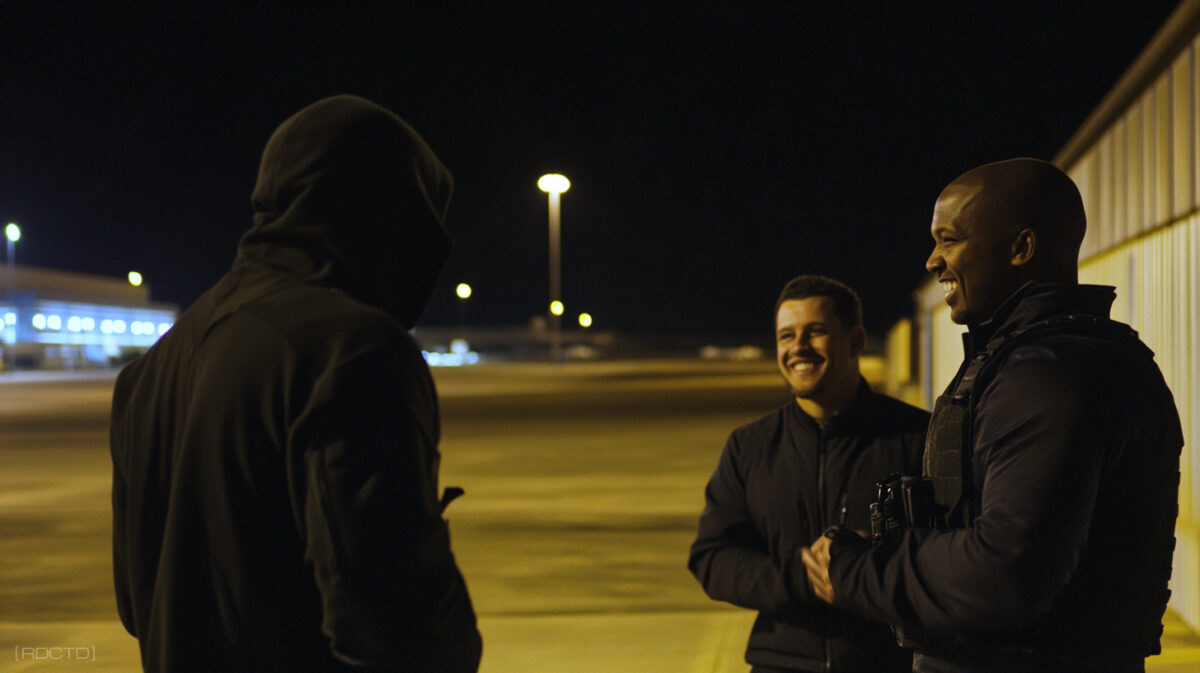 The tradecraft guide to gaining a stranger’s trust in 30 seconds – when you’re dealing with a border official, calming down a hostile local, asking a favor from a random civilian, getting past a security guard, etc.
The tradecraft guide to gaining a stranger’s trust in 30 seconds – when you’re dealing with a border official, calming down a hostile local, asking a favor from a random civilian, getting past a security guard, etc. ![]()
In covert operations, you rarely get a second chance. Whether you’re establishing a cover, influencing someone you just met to do something for you, eliciting information, or building rapport for a longer play, you’ve got about 30 seconds to make a connection that doesn’t just seem genuine – it has to feel real to the target. This isn’t small talk. It’s calculated, high-stakes interaction based on psychological principles and tested field tradecraft.
Trust gained quickly is trust built on instinct. Your job is to shape that instinct before they even know it’s happening.
![]()
![]()
RAPID-CONNECTION BUILDING
The psychology behind rapid connection-building hinges on our brain’s need to quickly assess safety, familiarity, and social alignment. In high-stakes or unfamiliar environments, the human mind is constantly scanning for cues to determine who can be trusted and what level of trust.
Operatives exploit this by leveraging behavioral triggers – mirroring body language, demonstrating controlled vulnerability, and establishing common ground – to create an instant sense of familiarity. These cues signal, subconsciously, which lowers defenses and fast-tracks rapport.
For strategic purposes, this isn’t about emotional bonding – it’s about earning enough trust, fast, to influence decisions, gather intel, or gain cooperation before the other person has time to second-guess the interaction.
![]()
![]()

![]()
![]()
I. FIRST IMPRESSIONS
The first moment of contact is your most powerful leverage point. In covert operations, people don’t give you time to earn trust gradually – they judge your intent, character, and threat level before you’ve said a word.
That snap judgment isn’t emotional; it’s evolutionary.
Your appearance, body language, and presence form the subconscious “read” that either opens a door or slams it shut. Operatives train extensively to control this moment, because once someone decides they don’t trust you, reversing that instinct is ten times harder.
Your physical presence speaks before your mouth ever opens. Operatives understand that people form judgments within milliseconds based on appearance, posture, and demeanor. You can’t afford a mismatch between your story, your look, and your energy.
![]()
Key Tactic Factors
![]()
The key isn’t perfection, it’s alignment. Everything visual about you should reinforce your intent. Even subtle inconsistencies can trigger subconscious alarm bells and kill the rapport before it starts.
![]()
![]()
II. SYNC AND MIRRORING
Before you say a word, your first real job is to listen – not just to their words, but to their rhythm, posture, tone, and emotional temperature.
Most people don’t realize that human connection happens more through how you engage than what you say. Operatives are trained to instantly assess and then align with the other person’s tempo. This isn’t about deception, it’s about creating psychological safety.
You want them to feel like they’re with someone who thinks, moves, and reacts just enough like they do to be familiar.
Humans are hardwired to like people who behave like them. This isn’t guesswork, it’s a behavioral feedback loop tied to the brain’s mirror neurons.
![]()
Tactic Execution
![]()
Mirroring creates a sense of rhythm – like you’re both in sync, even if you just met. It lowers defenses and activates familiarity without triggering alarm. The key is subtlety – done wrong, it feels like mimicry. Done right, it makes a stranger feel like they’ve known you longer than they have.
![]()
![]()
III. CONTROLLED VULNERABILITY
There’s a myth that strength in human interaction comes from projecting control and confidence at all times. In truth, when you’re trying to build trust fast, especially with someone who has no reason to open up to you, the strongest move is often the most subtle – showing just enough (and the right type of) vulnerability to disarm their defenses.
Operatives use this to create emotional proximity in seconds. When you’re the first to offer a sliver of authenticity, it signals you’re not a threat, you’re relatable, and you’re not playing a game – even when you are.
Operatives call this a “controlled disclosure.” Humans are inclined to trust people who show a hint of vulnerability – especially first. It sets up a psychological debt: you were open with me, so I’ll be open with you.
![]()
Example Strategies
![]()
The goal isn’t to impress. The goal is to be human. Vulnerability short-circuits suspicion. You’re giving them a reason to feel safe with you, because you just showed you’re willing to drop your guard first.
This sets the tone for the rest of the interaction. You’re not positioning yourself above them, you’re inviting them to your level. That’s where trust lives.
![]()
![]()
IV. COMMON GROUND
Humans are tribal by nature. We’re wired to trust people who reflect even the smallest part of our identity, values, or experience. That instinct is ancient, evolution favored those who could rapidly distinguish friend from outsider. In covert operations, this works to your advantage.
Your job isn’t to fabricate a shared background – it’s to find or create enough perceived overlap to lower defenses and trigger a sense of familiarity.
This is the first step toward making a total stranger feel like an ally or a friendly, even if just for the moment.
![]()
Rapid Tactics
![]()
Once they respond positively, reinforce it: “No kidding, me too,” or “Same here, I used to live nearby.” It’s not about the content. It’s about the resonance.
And once you’ve got even a sliver of shared ground, you can build out from it. In the field, one point of connection is often all you need to open the door.
![]()
![]()
V. MICRO-COMMITMENT
Once you’ve established initial rapport, the next move is to secure a micro-commitment, a small action that psychologically anchors the connection.
Humans are more likely to trust someone they’ve already made a decision to assist, even in a minor way. It triggers what’s known as the commitment, consistency principle in behavioral psychology: once someone makes a choice, they’re more inclined to stay consistent with that choice moving forward.
In covert operations, this principle becomes a lever. You’re not asking for anything risky, just enough to shift them from passive observer to active participant.
![]()
Lever Questions
![]()
That subtle shift from stranger to helper, gives you psychological buy-in. They’ve made a choice to engage, which turns a fleeting interaction into a cooperative one. From there, your window of trust opens wider and your operational options expand with it.
![]()
![]()

![]()
![]()
Gaining someone’s trust rapidly isn’t about faking connection, it’s about accelerating it. In covert operations, you have to build bridges quickly, often across cultural or personal gaps, to achieve strategic objectives.
These techniques aren’t just about extracting cooperation. They’re about understanding people, reading their signals, and responding in intuitive ways.
Trust isn’t given. It’s earned, sometimes in less than 30 seconds. And when you’re working under a cover identity, every second counts.
Use these principles as foundational tradecraft, whether you’re working a target, navigating a hostile checkpoint, or just reading a room in seconds flat.
Authenticity isn’t what you are or think you are. It’s what they feel you are that matters. And in the field, perception is everything.
![]()
// Trust isn’t always built over time, it’s built over signals. Time just confirms what the first 30 seconds already decided.
[INTEL : Power Dynamics of The Streets]
[OPTICS : Covert Operative x US Marshall]
![[RDCTD]](https://rdctd.pro/wp-content/uploads/RDCTD-Covert-Operative-Tradecraft-Guide-LOGO-tk.png)
![[RDCTD]](https://rdctd.pro/wp-content/uploads/RDCTD-Covert-Operative-Tradecraft-Guide-LOGO-mobile.png)

